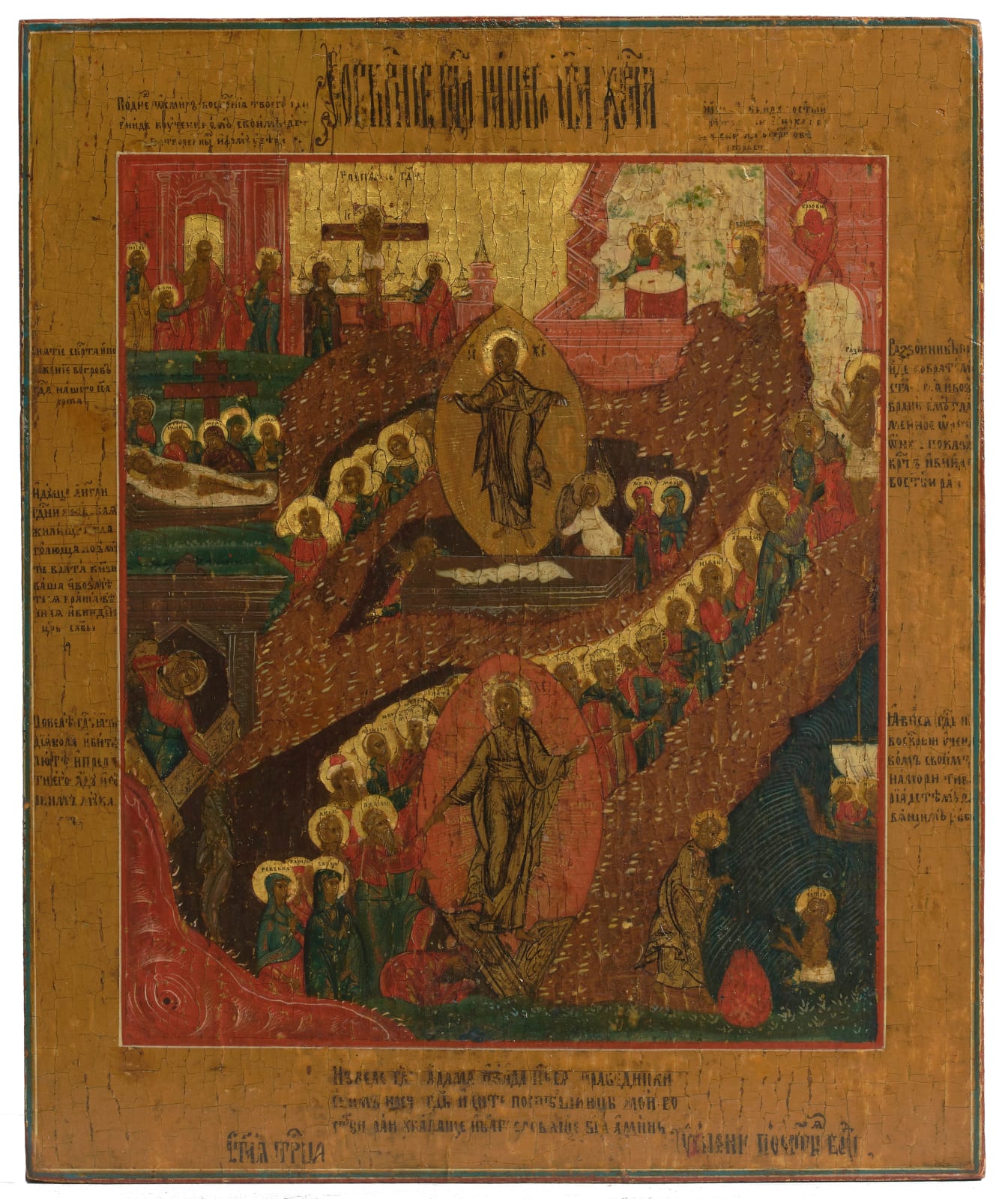Resurrection and Descent into Hell
Inscriptions in Church Slavonic: The writing on the borders identify the scenes
Feast Day: Easter Sunday
The Resurrection is the greatest feast of the Orthodox Church, celebrating Christ’s resurrection and descent in to hell, where he rescued Adam and Eve, the biblical kings Solomon and David, as well as St John the Baptist and other Old Testament figures. In English, this event in known as the Harrowing of Hell; in Greek, the Anastasis; and in Russian, Voskresenie.
The initial depiction of the event, which originated in Byzantium in the 9th century, is fairly simple. Over time this initial depiction became ever more elaborate due to western influences. In the lower-left corner we can see the Hellmouth (this iconography originated in Anglo-Saxon art) from which Adam, Eve, Solomon and David all emerge along with all the others that Christ, shown within a red mandorla, has saved. The saved form a line which crosses the icon diagonally towards the upper right of the icon where the Good Thief stands before the Gates of Heaven.
On the bottom right of the icon, we can see Christ again, calling the apostles by Lake Galilee. In the centre of the icon, the empty tomb and the Shroud are depicted, with the risen Christ shown in a yellow mandorla. Around the top half of the icon, various episodes from the Passion are depicted. From the left, the Deposition from the Cross, the Doubting Thomas and the Crucifixion.
The Descent into Hell comes from the apocryphal Book of Nicodemus. The rescue of Adam and Eve in particular serves as a representation of the salvation of all humanity from the tombs of spiritual death.
For a more expansive analysis of such icons please refer to David Coomler’s blog Icons and their Interpretation:
https://russianicons.wordpress.com/2019/01/21/a-very-detailed-resurrection-icon/

